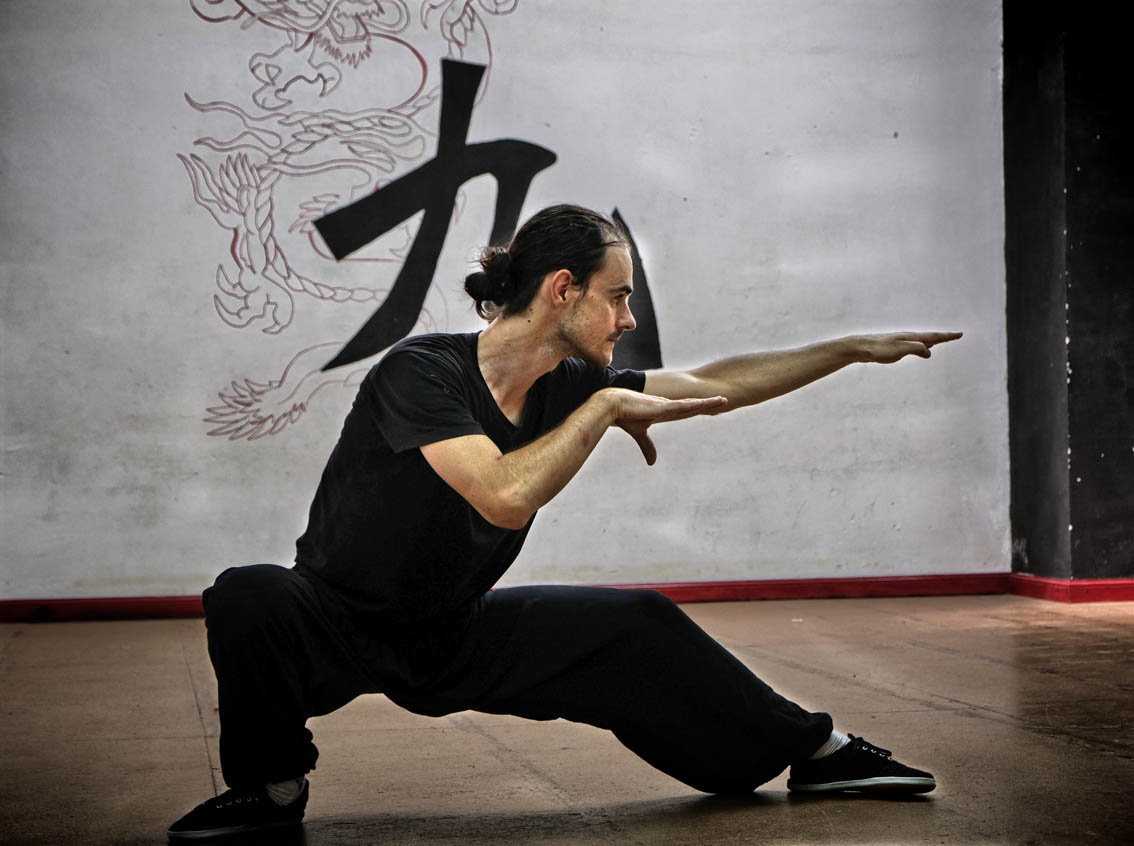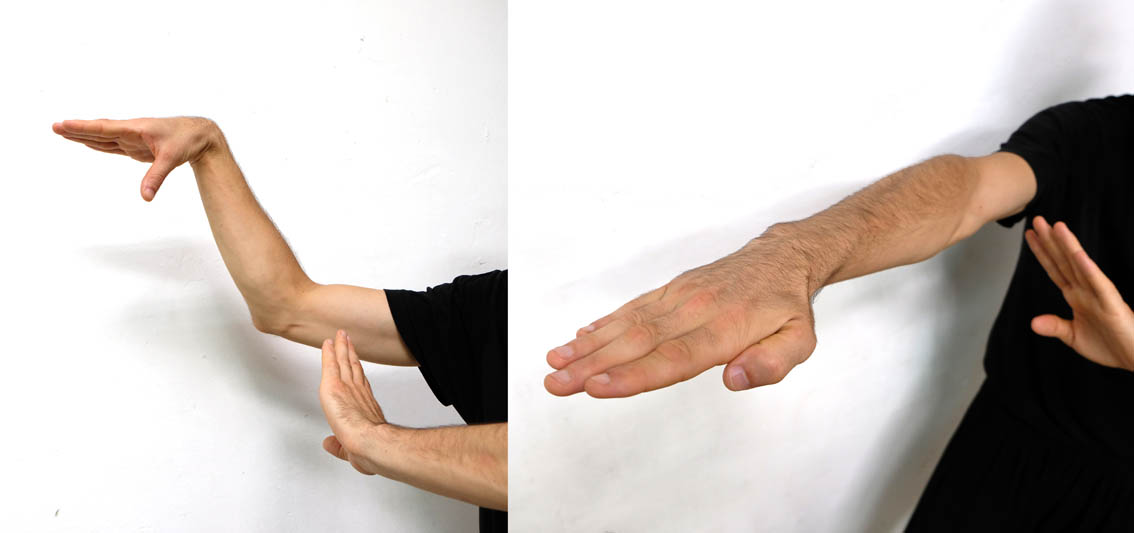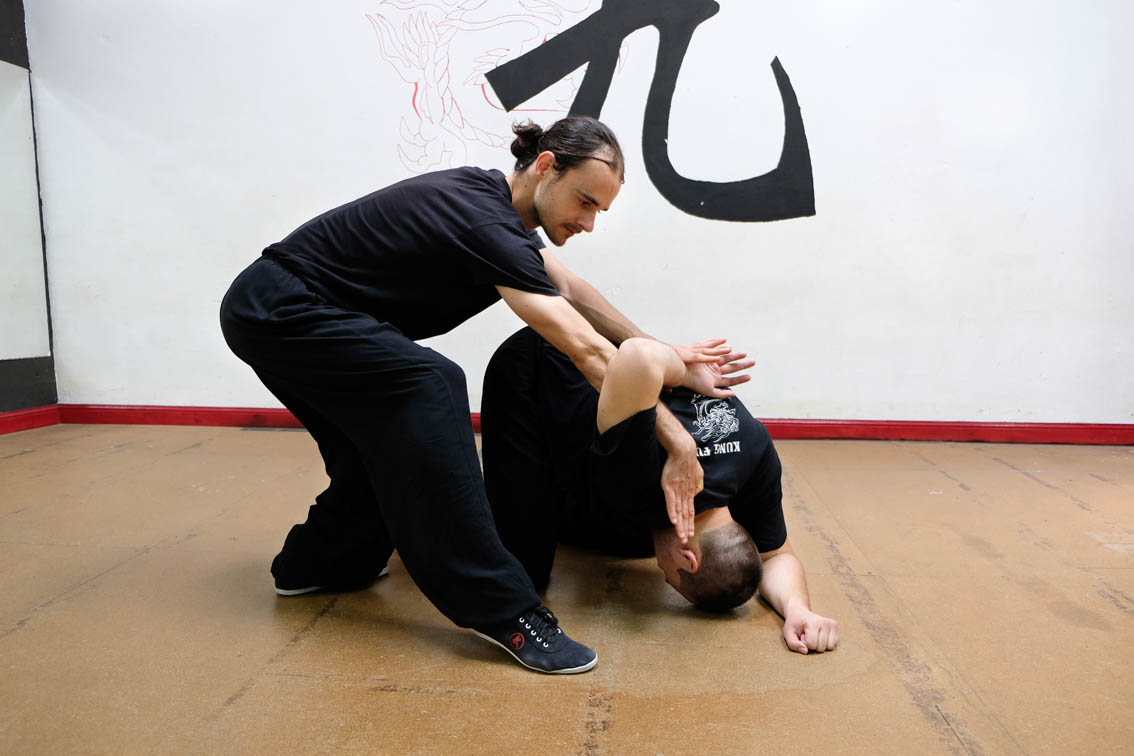Snake techniques are probably some of the oldest that exist in Chinese Martial Arts. Many styles are based or contain techniques based on this animal. Choy Li Fut 蔡李佛, with its extensive repertoire of martial techniques, could not be an exception. Among the animal forms that our style contains, the Snake Form or Seh Ying Kuen 蛇形 拳 is one of the most difficult and complex.
The snake is an animal considered "internal"; this means that the use of internal energy (氣 qi) and relaxation over external physical force predominates in the execution of techniques and movements. Its movements are smooth and sinuous, but also very precise and fast.
The snake is by nature a defensive animal; he remains motionless and alert to the opponent and, when attacked, moves quickly to avoid the blow and counterattacks in a sudden way to retreat again.
Snake techniques are therefore elusive, sinuous. Faced with an attack, direct blockades are not used, but the blow is eluded following the same direction of movement, and the practitioner intentionally collapses to counterattack through possible gaps.

The Snake Form also uses continuous sinuous movements of the arms to mislead the opponent and camouflage the line of attack. Snakes are cold and show no emotions, and the practitioner moves from the guard position to full attack in a fraction of a second, without preparatory positions or threatening postures.
This type of smooth and undulating movements requires a great relaxation, difficult to achieve by the novel practitioner, and also a great flexibility of waist and shoulders. In the form, we often find movements in which the hip is positioned on one side and the waist and shoulders have to rotate to the opposite side. Acquiring this flexibility takes time and, until the student gets used to it, it can be strange and somewhat forced, since it goes against the natural tendency of the body.
Another of the most important characteristics of the snake is that it does not use fists. The attacks of the snake are based on hitting the vital points of the opponent, so the open hand is used with the fingers extended. By striking a smaller surface, a blow with the tips of the fingers is able to penetrate deeper than a fist, but also needs more precision. In Seh Ying Kuen, the whole form is done with open hands, and only the right fist is closed in greetings. This means that the movements are more relaxed since there is not the same tension as when working with closed fists, and thus the movements are faster.
The techniques of the snake can be lethal and in a dangerous situation should be used only as a last resort, but with a single blow one must be able to finish the fight. They require a great mastery of the own body although, as always, it is necessary more control to avoid causing harm than to do it.
The most characteristic blow of the snake is Jin-Ji 箭指 ("arrowhead fingers"), which uses the tips of the fingers to strike on these vital points. The outstretched fingers, in addition to their speed, also have another great advantage, which is that they have a greater reach than a fist with closed phalanges. This is an advantage when blocking while hitting, providing a few more centimeters of range that can be decisive.
Although this type of blows with extended fingers are directed to weak points or soft parts, the training of the snake also involves the hardening and conditioning of the fingers. Begin by doing push-ups using the fingers, starting with the five fingers and then with two or three fingers; afterwards sandbags or stones are hit using the tips of the fingers. It is important that the fingers do not bend when impacting and that the movements are precise, since in a combat the aim is essential to reach the vital points of the opponent. Over time a strong and solid snake fist develops, capable of striking and penetrating without deforming the fingers.
The positions of hands that are used in the form imitate the appearance of the snake: Jin-Ji is the head of the animal, and it is quick as a snake bite; Chiun-Nau 穿挠 imitates the open mouth of the snake, and is useful for grabbing and attracting the opponent; the snake tongue uses the index and middle fingers to pound in similar fashion to the Jin-Ji. The form also hides various movements of qín-ná 擒拿 (grip and dislocation). These are just some movements of the form.

On the left, Chuin-Nau imitating a snake's open mouth. On the right, Jin-Ji to hit vital points.

One of the qín-ná techniques in the form.
In short, Seh Ying Kuen is a very technical set, which hides very effective techniques and requires a long training time for its correct execution, but also teaches the student to save his energy and hit relaxed, skills that must be transferred later to the rest of forms and techniques to improve all our Kung Fu.
